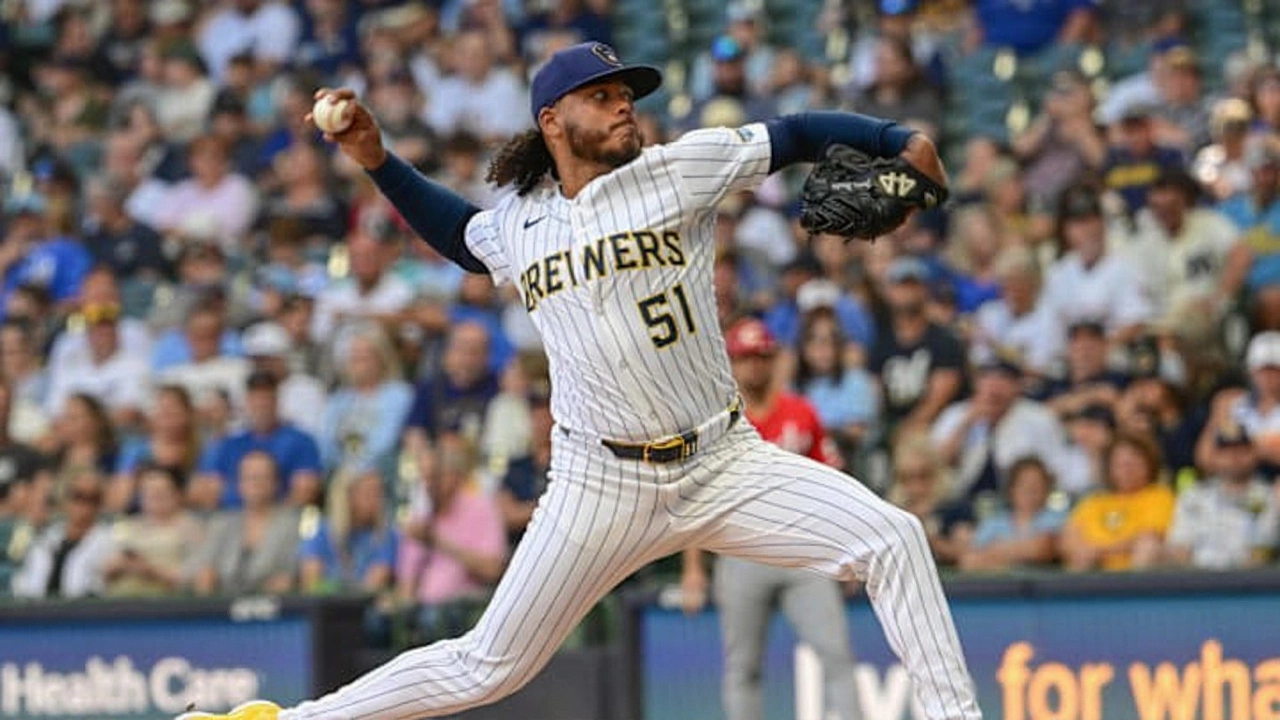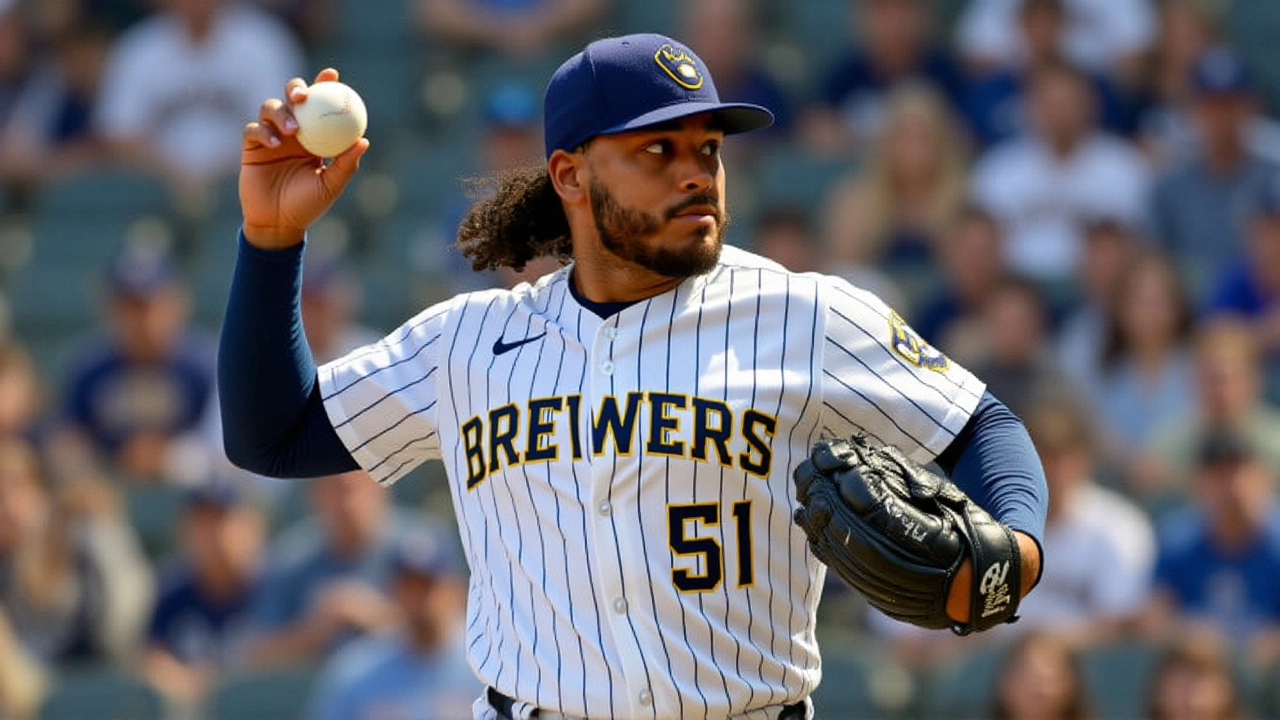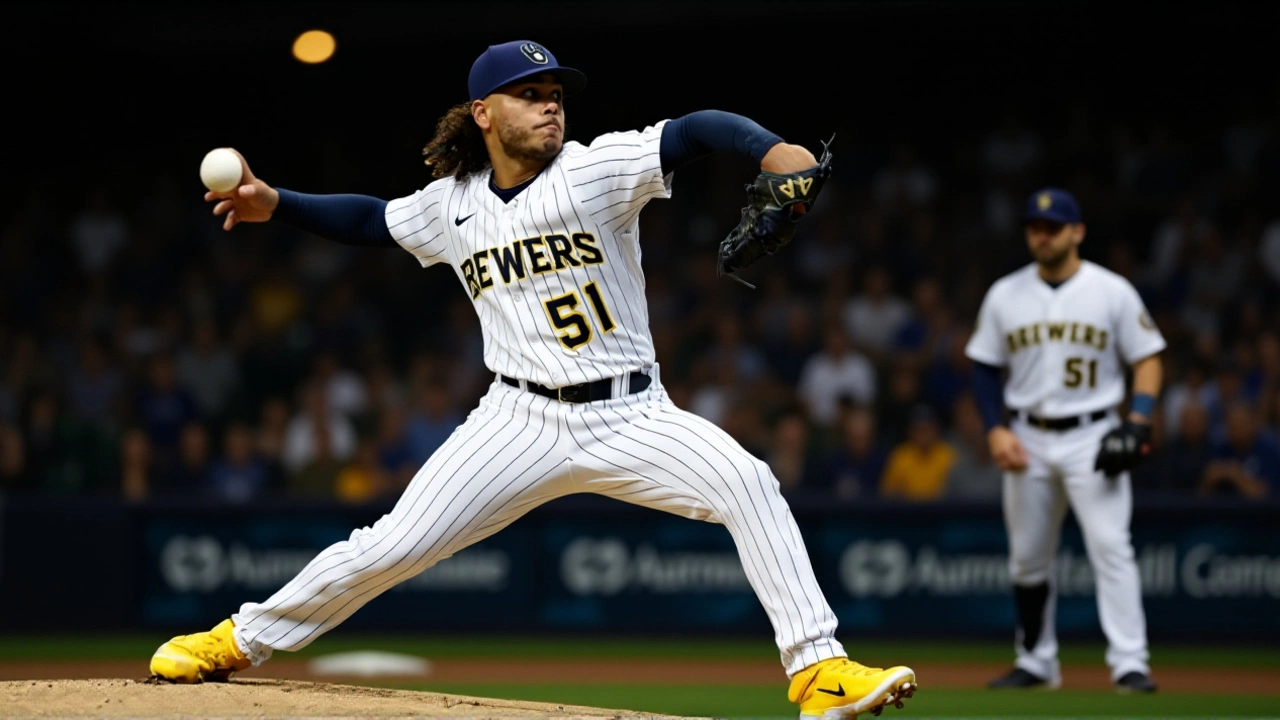When Freddy Peralta, starting pitcher of the Milwaukee Brewers took the mound for Game 2 of the NLCS, the baseball world took notice. The 28‑year‑old Dominican right‑hander was staring down the Los Angeles Dodgers at American Family Field on Oct. 14, 2025, with the Brewers fighting to avoid a 0‑2 deficit. What most fans didn’t realize was that, even as the stakes rose, whispers in the front office were already turning his name into a potential trade chip for the upcoming offseason.
Why Peralta Is on the Trade Radar
The numbers tell a story that any general manager would find hard to ignore. Since the start of the 2024 season, Peralta has logged a 27‑14 win‑loss record, a 3.11 ERA and a 7.8 bWAR, leading all qualified Brewers starters in innings pitched (332.1). His WHIP of 1.27 against the Dodgers during the regular season shows he can dominate elite lineups. According to Jon Heyman, an MLB Insider, the pitcher still has roughly 1.5 years of team control left before he becomes a free agent after the 2026 season. That window, combined with his durability — he hasn’t missed a rotation turn since 2022 — creates a sweet spot for clubs looking to buy a near‑ace at a discount.
"I don't like to think about it, but I understand and I know it's really important," Peralta said after Game 2, when asked about the pressure of facing a lineup that’s been studying his pitches all year. "We have the people here that are in charge to check on us and make sure that we are doing it right… but at the end of the day, it's part of the game and you never know, and they are really good at it. But I think you have to stay focused on the game and try to make it simple and not think too much. That's it."
Brewers' Pitcher Trade History
Trading pitchers before they hit free agency isn’t new for Milwaukee. Corbin Burnes, the 2021 NL Cy Young winner, was shipped to the Baltimore Orioles before the 2024 Opening Day after the club declined to extend his contract. The move shocked fans because Burnes had formed, alongside Peralta and Brandon Woodruff, what was once dubbed “the most fearsome trio of starters in the game.”
Similarly, relievers Josh Hader and Devin Williams were flipped before hitting the market, netting the Brewers prospects and cash considerations. The pattern suggests a philosophy: monetize pitching talent while it’s hot, then reinvest in younger arms or position players.
Postseason Performance and Value
Peralta’s postseason résumé this year adds another layer. He entered Game 2 with a clean 2‑0 record against the Dodgers, a 3.27 ERA and the confidence of having already beat them twice in the regular season. In that high‑pressure outing, he struck out nine, walked only one, and kept the Dodgers to two runs over six innings. The performance helped keep the Brewers alive, pulling the series level at 1‑1.
Beyond raw stats, his composure under fire raises his marketability. Teams in need of a front‑of‑the‑rotation arm often pay a premium for a pitcher who can handle playoff intensity. If the Brewers decide to shop him, they could command a return that includes a top prospect or a package of mid‑level relievers — assets that have been scarce for Milwaukee in recent years.

Stakeholder Reactions
Fans are understandably split. A July 24, 2025 article on ReviewingTheBrew.com highlighted the Brewers’ “best record in baseball” at the time, sparking optimism that the club would keep its stars together. Yet a BrewCrewBall.com piece titled “No, The Brewers Aren’t Trading Freddy Peralta At The Deadline” reminded readers that the front office has a history of pulling the plug on pitchers as soon as the market sweetens.
Matt Arnold, the club’s President of Baseball Operations, has stayed tight‑lipped. In a brief press conference after Game 2, Arnold said, "Our priority is winning now, but we’re always looking at the long‑term health of the franchise. We'll make decisions when the right opportunity presents itself." That comment feels like a classic brews‑talk line — vague enough to keep trade rumors alive while reassuring the fanbase.
Owner Mark Attanasio has, historically, let the baseball side run the show. His tenure since 2005 has seen both deep playoff runs and periods of rebuilding. Observers note that Attanasio’s willingness to let Arnold negotiate suggests any potential deal would be mutually beneficial, rather than a forced move.
What the Offseason Could Hold
Looking ahead, the Brewers’ window extends beyond the 2025 NLCS. With a core that includes outfielder Willy Adames (who stayed out of the trade market) and a young bullpen, the club appears poised to stay competitive. However, the ticking clock on Peralta’s contract could force a decision before the 2026 season begins.
If a trade goes through, the Brewers might receive a top catching prospect, a left‑handed reliever, or even a package of mid‑level prospects to replenish depth. Conversely, keeping Peralta could solidify the rotation for another year, giving the club a chance to negotiate an extension before free agency looms.
One thing’s certain: whichever path the front office chooses, it will shape the Brewers’ trajectory for the next two to three seasons. The balance between winning now and preserving future flexibility is a tightrope act that only a few clubs have managed well.

Key Takeaways
- Freddy Peralta posted a 3.11 ERA and 7.8 bWAR from 2024‑2025, leading Brewers starters.
- The pitcher still has about 1.5 years of team control left before free agency.
- Milwaukee has a recent history of trading high‑value pitchers before they hit free agency.
- Front‑office leaders Matt Arnold and Mark Attanasio have not ruled out a trade, but no official word yet.
- The upcoming offseason could see Peralta either stay in Milwaukee or become a high‑priced asset for another club.
Frequently Asked Questions
How likely is Freddy Peralta to be traded before the 2026 season?
Analysts estimate a 55‑60% chance that the Brewers will move Peralta during the 2025‑2026 offseason. His strong postseason performance, combined with a contract that expires after 2026, makes him an attractive target for teams needing a front‑of‑the‑rotation arm.
What would the Brewers likely get in return for Peralta?
Given recent market trends, Milwaukee could expect a top catching prospect, a left‑handed reliever, or a package of mid‑level prospects. The exact return would hinge on which clubs are willing to part with high‑upside talent at the trade deadline.
How does Peralta’s contract compare to those of other Brewers pitchers who were traded?
Unlike Corbin Burnes, who was traded with two years left on his contract, Peralta has roughly 1.5 years of control, placing him slightly closer to free agency. This timing often pushes teams to trade for value rather than lose a player for nothing.
What impact would losing Peralta have on the Brewers’ 2026 outlook?
If Peralta departs, Milwaukee would need to rely on younger arms like Brandon Woodruff, who is still recovering from injury, or seek external replacements. The rotation could see a dip in WAR, but a strong return could offset the loss by bolstering the farm system.
Why have the Brewers been willing to trade away pitchers in the past?
The organization believes in capitalizing on market peaks to fund long‑term depth. Trading Burnes, Hader and Williams before free agency helped generate prospects and cash, aligning with their strategy of balancing present competitiveness with future flexibility.
